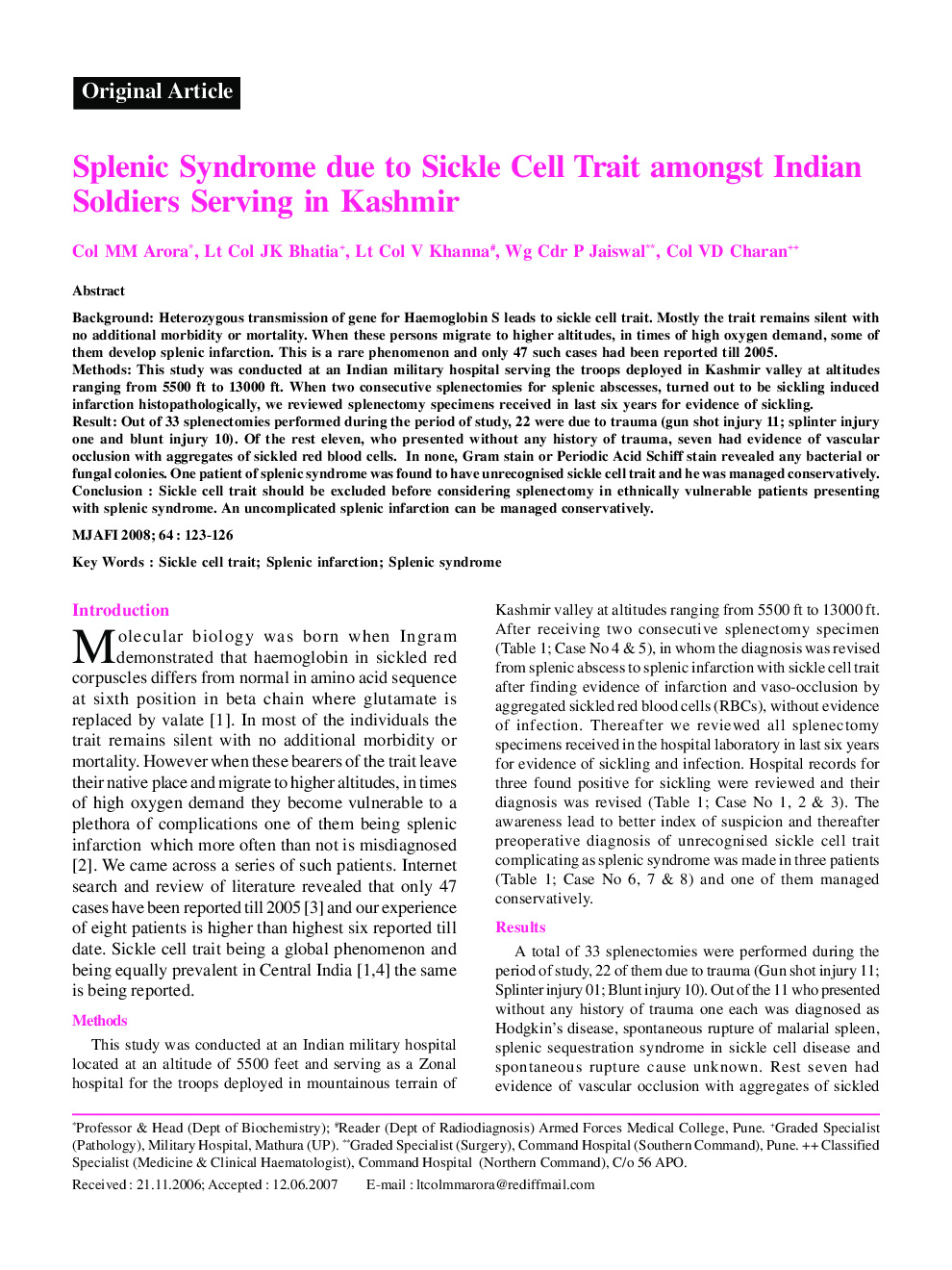| Article ID | Journal | Published Year | Pages | File Type |
|---|---|---|---|---|
| 3162449 | Medical Journal Armed Forces India | 2008 | 4 Pages |
BackgroundHeterozygous transmission of gene for Haemoglobin S leads to sickle cell trait. Mostly the trait remains silent with no additional morbidity or mortality. When these persons migrate to higher altitudes, in times of high oxygen demand, some of them develop splenic infarction. This is a rare phenomenon and only 47 such cases had been reported till 2005.MethodsThis study was conducted at an Indian military hospital serving the troops deployed in Kashmir valley at altitudes ranging from 5500 ft to 13000 ft. When two consecutive splenectomies for splenic abscesses, turned out to be sickling induced infarction histopathologically, we reviewed splenectomy specimens received in last six years for evidence of sickling.ResultOut of 33 splenectomies performed during the period of study, 22 were due to trauma (gun shot injury 11; splinter injury one and blunt injury 10). Of the rest eleven, who presented without any history of trauma, seven had evidence of vascular occlusion with aggregates of sickled red blood cells. In none, Gram stain or Periodic Acid Schiff stain revealed any bacterial or fungal colonies. One patient of splenic syndrome was found to have unrecognised sickle cell trait and he was managed conservatively.ConclusionSickle cell trait should be excluded before considering splenectomy in ethnically vulnerable patients presenting with splenic syndrome. An uncomplicated splenic infarction can be managed conservatively.
